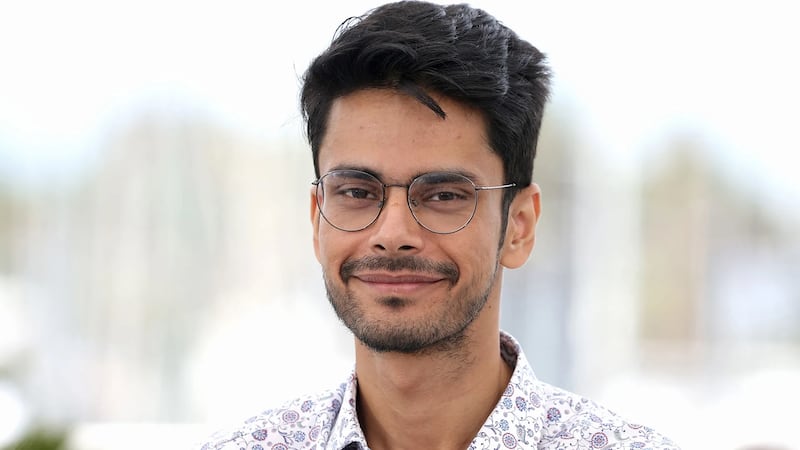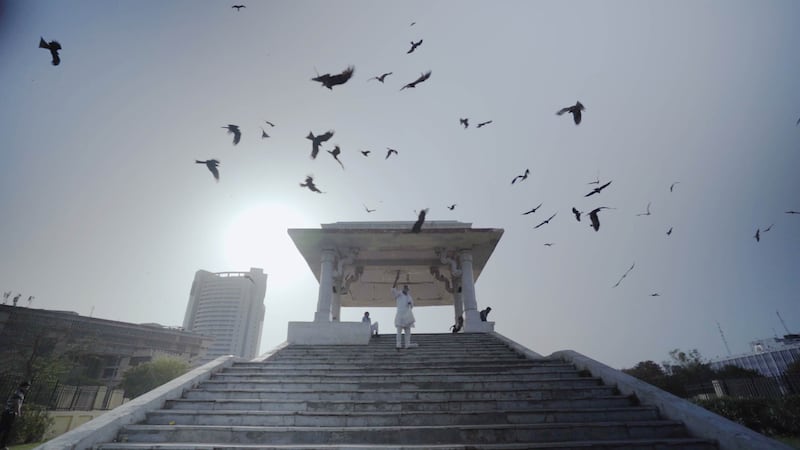At some point in the last decade or so, black kites began dropping from the polluted skies above teeming New Delhi. It would take a singular sensibility to set about getting the creatures, who flock in their thousands, back into unwelcoming skies. Nadeem Shehzad and Mohammad Saud, articulate, ingenious brothers, decided to do just that. As All that Breathes, a wonderful new documentary by Shaunak Sen, explains, the men found that veterinarians in that largely Hindu city were reluctant to take in carnivorous animals. Nadeem and Mohammad ended up caring for the creatures in their busy basement. They grind up meat by the pound. They mend wings. They set the lucky ones loose.
Were they famous before All that Breathes wowed the Sundance and Cannes film festivals?
“I think they were known in very niche circles. I don’t think they’re well known outside of those,” Sen tells me. “I certainly was not in those circles prior to this. So I had no knowledge of them. When you live in a city like Delhi, your life is laminated by this pervasive, omnipresent greyness — in terms of the visual texture of it, where the sky is an expansive, monochromatic, undifferentiated grey and the sun is a diffused blot, but also in terms of the noxious air you are breathing in. I wanted to make something about the sense that we are all a community of air.”
As you will have gathered from that opening paragraph, Sen is an impressive and unusual young man. Dauntingly articulate, he barely laughs in the course of our conversation. And he has made an impressive and unusual film. All That Breathes is here to tell the brothers’ story. It is also here to knit together the wildlife that crawls, runs and swarms across this unimaginably packed city. We begin with rats. The camera pulls in to locate a snail. Elsewhere, we find a turtle crawling unmolested through the undergrowth. It is quite something.
READ MORE
“It started with me driving in my car and seeing the tiny dots in the sky, which were the black kites,” he says. “There was a sense that one of them was swooping. And I wondered what happened when they fell from the grey sky. I looked it up online and that is when I found out about the brothers.”

We in western Europe have a different relationship to birds of prey such as kites. Even our own seem faintly exotic. All the more so when observed in South Asia. Yet it seems the kites are as common there as pigeons are here. That parallel could extract some mystique from the project.
“Well, they’re certainly not exotic, per se — in the sense of being rare birds,” he says. “Delhi has one of the densest populations of back kites anywhere. So they’re not a rarity. However, having said that, I don’t think that their cultural provenance is as banal as the pigeon — because they’re also mired in a lot of cultural folklore. Because remember these are raptors. They are ferocious birds. They have this aura. They have a magical quality.”
All That Breathes is a poetic film. Presented without voiceover, the images drift by in a spooky, seamless flow. Political protests surge up in the background and the yelling seeps into the brothers’ busy basement. But it is also an effective fly-on-the-wall study. Coming in at a curt 91 minutes, the picture must have been ruthlessly edited. It takes a lot of filming to win over this degree of trust. In a standout, quiet moment, one of the brothers closes a door on the camera and it wanders calmly to another part of the building. Balance seems to have been achieved.
It was important to open up the city as a kind of dense intermeshing of human and non-human stakes constantly jostling cheek by jowl, which is what the city is
“The blunt force of boredom is inescapable,” Sen says. “It’s really the elixir of magic for any filmmaker, because you essentially wait and wait and wait for the film frame to get drenched with a pale everydayness. You want it to be mundane. So it’s really a moment when that suddenly gets switched on. After that, you know a door has opened. You’re able to get the material you need.”
In contrast, the footage of wild creatures sneaking into the corners of the frame seems the result of exhaustive prowling about the streets.
“It was important to open up the city as a kind of dense intermeshing of human and non-human stakes constantly jostling cheek by jowl,” he says. “Which is what the city is. To open up the city, sit down and watch a turtle for two minutes. To watch rats for four minutes. To watch a pig or a horse for long shots that are uncut. That was part of the conceptual programme for the film.”
It is not a huge surprise to learn that Sen comes from an academic background. Raised in Delhi, he took a degree from the AJK Mass Communication Research Centre in his home city before moving on to PhD studies at Jawaharlal Nehru University. He has been a visiting scholar at Cambridge and won a fellowship from the Films Division of India. His first film, Cities of Sleep, made it to festivals in Mumbai and New York, but All That Breathes really landed with a wallop. It got into Sundance and walked away with the World Cinema Grand Jury Prize in the documentary category. That helped the film get into the official selection at Cannes. L’Oeil d’or, an independent Cannes prize for best documentary, followed. It now seems like a safe bet for an Oscar nomination.
“I definitely did not expect to go to both those top-tier festivals,” he says. “But one has hopes when one is making the film that you will manage to somehow break into one of the top festivals. So we were all absolutely beside ourselves with joy that that had indeed h

appened. There is a special kind of value to showing in festivals — where it feels like a micro-celebration of different sorts of film. It’s very cool. It was a lovely thing to happen.”
I wonder if the screenings opened up any misconceptions about India in general and Delhi in particular. There is always some idiot who will say something stupid in the Q&A after the movie.
“I haven’t encountered people who’ve had egregiously ignorant opinions,” he says generously. “It’s never been blatant or shocking. People have all kinds of images of the city being only poor and, yes, there is a large number of disempowered people. But that’s one exoticised image of poverty that becomes heavier because of how much it travels. The city is complicated. It is all kinds of things. There are assumptions about the city in terms of its class denomination — which is something one has to then get into. Other than that, no. But in film festivals you are in a niche environment.”
And what of the birds and the brothers? In the course of the film we see them rustle up new funding and build a cleaner, larger open-backed cage. They have since seen All that Breathes become a success at two of the world’s most prestigious film festivals. Are they happy with the result?
“It wasn’t the case that we finished the film and then showed it to them. They were constant interlocutors throughout,” he explains. “It was a constant fluid experience. They got to come to Cannes and see it on the big screen with us.”
Who could have seen that coming?
All that Breathes is in cinemas now















